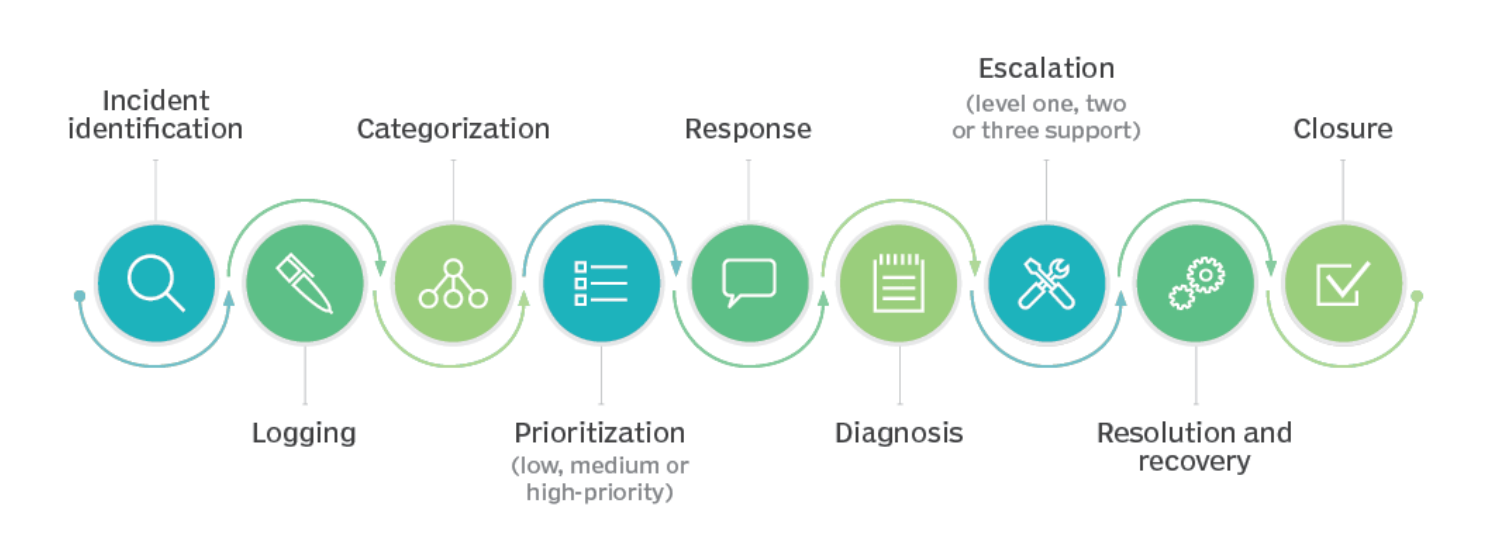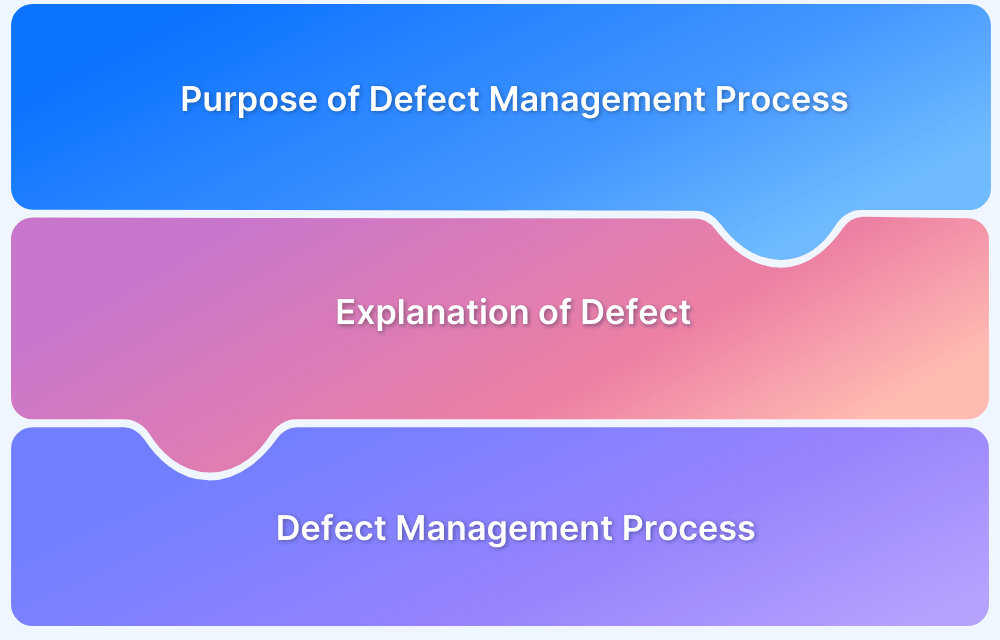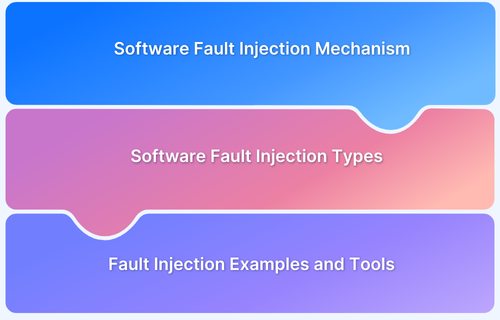In software testing, an incident refers to any unexpected event or deviation from expected behavior, whether caused by defects, environment issues, or configuration errors. Properly identifying and reporting incidents is crucial for maintaining software quality, improving collaboration, and ensuring timely fixes.
Overview
What is an Incident in Software Testing?
- Any unexpected behavior, error, or deviation during testing.
- Includes bugs, environment failures, integration issues, or UI errors.
- Not every incident is a defect, but all incidents impact test outcomes.
Why is Incident Reporting Important?
- Creates traceability for issues and their resolutions.
- Helps prioritize fixes based on severity and impact.
- Improves communication between QA, developers, and stakeholders.
- Builds a knowledge base for future prevention.
How to Report Incidents Effectively?
- Provide clear title + description of the issue.
- Include steps to reproduce, expected vs actual results.
- Capture logs, screenshots, or videos for evidence.
- Tag with severity, priority, and environment details.
What Reports are Used in Incident Management?
- Test Incident Report: Documents each individual incident with all details.
- Test Cycle Report: Summarizes incidents across a test cycle for release readiness.
- Supports decision-making on product stability before go-live.
This article explains what incidents are in software testing, why reporting them is essential, how to report effectively, and the main types of incident reports used in QA.
What is an Incident in Software Testing?
You might notice that the actual results differ from the expected results while running a test. It can be summarised as anything questionable in the form of Issues, defects, incidents, bugs, or problems when the actual result differs from the expected result.
Other reasons for issues include incorrect test environment configuration or failure, faulty tests, invalid expected outcomes, and tester errors.
Talking about incidents occurring defect management is a popular procedure in software testing. Many flaws stay hidden and are not evident right away. When bugs themselves are not perceptible, managing them remains unapparent. How do you incorporate such instances? Take a pause and think about it. This guide will give you a profound glimpse into it.
Why to report the incidents in Software Testing?
As listed below, incident management in software testing has numerous advantages:
- It’s helpful to write with specific objectives in mind, just like with any written communication.
- Giving programmers, product managers, and others in-depth information on the behavior seen and the problem is one common objective for such reports.
- Without a method for assigning, reporting, managing and classifying the defects from discovery to final resolution, it is exceedingly impossible to keep track of all of them, even on smaller projects when less than 100 faults are discovered.
- A description of the improper behavior that was seen and a classification of that improper behavior are both included in an incident report.
- Another is to assist with the trend analysis of aggregate defect information, either to learn more about a specific collection of issues or tests or to comprehend and report the overall system quality.
- Finally, an analysis of defect reports throughout a project, or even across projects, might reveal information that helps to enhance the development and test processes.
How to effectively report Incidents?
Technical writing characterizes an excellent incident report in software testing.
Here are some general guidelines to follow while writing an incident report:
- By carefully selecting changes to the processes used to reproduce the fault, you should also strive to isolate it. By identifying the flaw, you can help the coder through the tricky section of the system.
- Penning the incident report will help you better understand how the system functions and when it fails.
- Some test cases emphasize boundary conditions, giving the impression that defects are less likely to occur frequently in actual use. Instead of solely relying on the test case, it is always an excellent idea to search for more widespread causes of the failure. The famous incident report response, “No actual user is ever going to do that,” is avoided due to this. Additionally, fewer duplicate reports are filed as a result of it.
- Some faults result in irregular or occasional symptoms, and it is always disheartening when an incident report is returned as “irreproducible.” So, when you notice symptoms, it’s an excellent idea to try to replicate them.
- There are many other test results accessible because the system is being tested extensively during a test period.
- A smart technique to discover and record extra data that the programmer will probably find very valuable is to compare an observed problem to other test results and known flaws detected.
- To comprehend the issue’s impact on the project, incident report readers—particularly managers—need to be aware of the bug severity vs priority.
- The impact should be specified in the summary field or title in most defect-tracking software.
- In incident software testing reports, word choice is quite important. You ought to be unambiguous and concise. You should also be objective, impartial, and fact-focused while bearing in mind the interpersonal concerns surrounding testing.
Finally, avoiding the issue of losing readers in the details by keeping the report concise and to the point will help to hold readers’ attention.
As a final general rule for incident reports, it is advised that you employ a review procedure for each submitted report. It works if the lead tester reviews the reports.
Basic Test Case Reporting Types for Software Testing
The following three basic types for test case reporting in software testing, are:
Test Incident Report
The faults or problems are discussed in this report as they emerge throughout the life cycle.
Many personnel from different teams are involved in defect and issue management; for example, the nature of the issue or bug may necessitate the tester to contact the developers, or there may be problems with deployment, or it may just be a technical mistake in the design and propagation.
At this point, a report on these problems and defects is produced in order to include the appropriate teams.
Exception: However, this is not always the case. The problems most frequently refer to bugs. In the Test Incident Report, any incident in software testing that might unanticipatedly happen during the testing life process is documented.
Features
- The deficiencies or occurrences mentioned in this test report are put in the repository with a special ID to make it simpler to look into the problem.
- The issues and occurrences are also divided into groups based on priority here.
- For preferred redressal, the high-priority issues are highlighted.
- For better management, it is advisable to include the individuals who were given the assignment in the incident report as well.
- The report’s obvious goal is to highlight all faults and problems so that appropriate action may be taken.
- This method also fosters transparency among the software teams and improves communication between them.
This open and honest working environment results from less confusion between the crew members and other project participants.
Test Summary Report
The test cycle’s core recommendation that the product is developed and prepared for release is made in the test summary report. It can be viewed as the last word on the entire testing cycle, capping it off with a concluding statement. The test manager typically creates this kind of report and it should be brief and to the point, with all pertinent information.
It shows how successfully the testing project was completed.
A test summary report may be produced at the conclusion of the cycle’s individual phases as well as at the conclusion of the product’s whole life cycle. A phase-specific report aids in identifying the product life cycle stages that should be referred to. A receipt of fitness for the product is the result of a conclusive test summary.
The test summary report must be able to provide:
- the test items and their IDs,
- any variations that might have happened during the process,
- how they were handled,
- a concise overview of all the results, including their evaluation.
Along with a formal suggestion for product release, it should expressly state that the product is fit for release.
Test Cycle Report
Running multiple tests throughout the testing life cycle is referred to as a test cycle report. It covers the scheduling and carrying out of specific tests, their importance, and the gravity of the problems that need to be fixed.
Every cycle generates a test cycle report, and every product build undergoes its own cycle execution.
The goal is to verify that a product emerges error-free and reliable at the end of the rigorous test cycles by running further cycles on it as necessary.
Features:
- The Test Cycle Report should explain the general cycle condition, the numerous faults that arose during the effects, their severity, and the cycle those problems had on the overall product test cycle.
- An essential feature of a test cycle report is that it identifies new flaws and anticipates potential problems as the product progresses toward maturity.
- The Test Cycle Report also contains all the issues that came to light but were not resolved in the most recent cycle, ensuring that the redressal picks up where the previous cycle left off.
Key Takeaways
To ensure the accuracy and precision of the product, the team of testers has been given the crucial task of logging and reporting occurrences and faults following software testing.
- They can track each incidence and determine how to stop and fix it by reporting and documenting various details and information about them.
- Additionally, by creating the test incident report, they can communicate information about testing with those concerned about the project and avoid communication flaws.
- Thus, creating a test incident report following software testing is essential for you if you want to ensure the efficient operation of your team and promote fantastic management.
Want to know how to eliminate these issues of software testing? Software testing gets seamless with smart optimization of software testing budget and deriving the max out of it.








